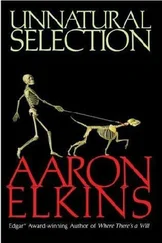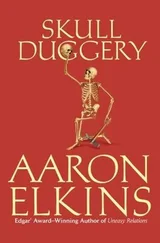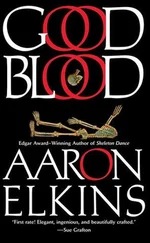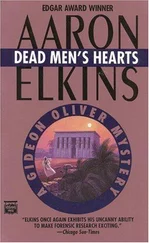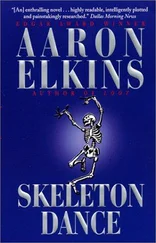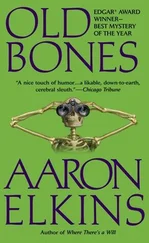Aaron Elkins - Old Scores
Здесь есть возможность читать онлайн «Aaron Elkins - Old Scores» весь текст электронной книги совершенно бесплатно (целиком полную версию без сокращений). В некоторых случаях можно слушать аудио, скачать через торрент в формате fb2 и присутствует краткое содержание. Жанр: Классический детектив, на английском языке. Описание произведения, (предисловие) а так же отзывы посетителей доступны на портале библиотеки ЛибКат.
- Название:Old Scores
- Автор:
- Жанр:
- Год:неизвестен
- ISBN:нет данных
- Рейтинг книги:4 / 5. Голосов: 1
-
Избранное:Добавить в избранное
- Отзывы:
-
Ваша оценка:
- 80
- 1
- 2
- 3
- 4
- 5
Old Scores: краткое содержание, описание и аннотация
Предлагаем к чтению аннотацию, описание, краткое содержание или предисловие (зависит от того, что написал сам автор книги «Old Scores»). Если вы не нашли необходимую информацию о книге — напишите в комментариях, мы постараемся отыскать её.
Old Scores — читать онлайн бесплатно полную книгу (весь текст) целиком
Ниже представлен текст книги, разбитый по страницам. Система сохранения места последней прочитанной страницы, позволяет с удобством читать онлайн бесплатно книгу «Old Scores», без необходимости каждый раз заново искать на чём Вы остановились. Поставьте закладку, и сможете в любой момент перейти на страницу, на которой закончили чтение.
Интервал:
Закладка:
A few yards ahead of me, for example, Calvin was launched on a confident exposition of the difficulties of authenticating art.
"Now take Rembrandt, for example, Nadia," he was telling his admiring new lady friend and her not-quite-so-admiring parents. "Do you have any idea how many brilliant students Rembrandt had? There was, let me see, Hoogstraten, Dou, er, Bol…"
And in my own group, while Charpentier and I walked along in silence, Lorenzo was trying to calm a huffing, chafing Froger by loftily telling him to put aside pride and accept the painting if Charpentier verified it-or even if he didn't, as long as Froger himself found it beautiful. Why should he care whether it was encumbered with such artificial, misleading labels as "real" or "false," which changed nothing whatsoever, being as they were mere perceptual constructs, transitory and equivocal? All one had to do was look at things postexistentially, that was all.
For some reason, Froger did not appear to be soothed.
I wasn't feeling very soothed either. In just a few minutes I was finally going to be seeing the picture, and I was steeling myself for the worst; the worst being that it would turn out to be a colossal dud, nothing more than one of those "Rembrandts" that pop up in the art market every few years with an almost tedious regularity. If they aren't gobbled up by some eager, naive collector, they are soon denounced, and then hurriedly withdrawn by the profusely apologetic dealers or auction houses that had them up for sale-only to surface again in a year or two, usually through other dealers, sometimes in other countries.
Surprised? You thought that, once a painting was proven to be a fake, that was that? That there must be some legal requirement that it be destroyed, or properly labeled, or something to protect unwary future buyers?
Sorry, but no such thing. Fakes are not illegal. You can copy all the Rembrandts you want. You can sign his name to them, you can crackle and darken them so they look old, you can put bogus seventeenth-century stamps and inscriptions on the backs. All perfectly legal as long as it's all in good fun. You can even go around telling people they're the real thing. What you can't do is try to sell them as such. That's why prudent forgers never sell their own work directly to the public; it's too easy to prove fraudulent intent. But dealers are another matter. They can be duped like anybody else, after all, and they can hardly be routinely charged with intent to deceive if some of their offerings turn out to be bogus. If the Met can make mistakes, why not them?
So where do you think all those exposed fakes that you're always reading about wind up when all the hoopla dies down? Back in circulation is where. After a suitable time, of course. And eventually, many of them end as the proud property of rich, gullible private collectors all around the world. Not that I thought of Vachey as gullible; not by a long shot. If his new Rembrandt was a phony, and if there was any duping going on, Rene Vachey was the duper.
Guess who that left as the dupee.
At 39 Rue de la Prefecture, a pair of Vachey's minions stood at the door of the house, under Pepin's fussy, darting supervision, to examine our invitations and direct us up to the gallery, or rather to make sure that we didn't stray into Vachey's ground-level private quarters. Upstairs, the folding, linen-covered partitions had been moved back, opening up a sizable reception area in which the guests milled about, sipping brandy or coffee.
Naturally, the only thing I could think about was having my first look at the Rembrandt, but the entry to the main part of the show remained blocked by a table drawn up against the partitions. All that was open was the section on the landing, near Vachey's study: Villon, Duchamp, and the other Cubists. And I didn't have much interest in those. Near the table, Vachey was energetically conferring with his secretary, Marius Pepin, and with a round, fluffy, excited woman in her sixties who Calvin told me was Clotilde Guyot, Vachey's gallery manager. Evidently, the exhibition wasn't quite ready to open.
Restive and eager to get on with it, I snared a balloon glass of cognac from a passing waiter, found a corner by myself, and waited. I'd already prepared myself mentally for being face-to-face with the Rembrandt-the alleged Rembrandt-and I didn't want to have to talk to anyone before I did. The truth is, I was too jumpy for rational conversation, but that didn't bother Calvin, who located me and rattled happily on for what seemed like half an hour. I think he was generously describing for me the attributes of the young woman he'd dined with, or maybe of some of the other women there, but I couldn't swear to it either way. I gulped at the brandy and waited.
At long last there was a businesslike rapping from the front. The table blocking the entrance was moved to the side. Madame Guyot raised her great, pillowy white arms for silence and turned her sunny pink face on us.
"Ladies and gentlemen," she announced breathlessly, "it is my privilege to welcome you to the Galerie Vachey tonight, and to thank you all for coming, and permit me to invite you in to view the paintings, and-wait, please-kindly do not carry your beverages into the exhibition." This was emitted in fluttery French that lacked discernible pauses (no wonder she was out of breath), after which she stepped hurriedly out of the way and behind the table, just in time to avoid being trampled by the herd.
Calvin and I, caught near the entrance with nothing to duck behind, were less fortunate. We were borne helplessly into the gallery, where more partitions necessitated an immediate choice; either go right, into the French wing, which had the Leger, or left into the Dutch wing, where the Rembrandt alcove was. Calvin was swept off to the right with the greater part of the crowd, bobbing along in the flow like a plastic cup in the surf, but I managed to fight my way to the left, where I found myself in a corridorlike space about ten feet by thirty, low-ceilinged and lined on both walls with an orderly procession of seventeenth-century paintings by Dutch masters.
I caught glimpses of a Honthorst, a Bloemaert, a Cuyp, all superb and more than enough to capture my attention under ordinary circumstances, but at the moment they couldn't have interested me less. Like most of the others, I made singlemindedly toward an alcove at the end of the corridor, where the partitions were draped with lush, green velveteen; obviously the place of honor, although its main wall was out of sight, around the corner of the corridor.
But at the last second, I got cold feet. Slipping into a nook just before the alcove, I let the others push by. Now that it had come down to it, I found that I didn't want to look at it, not yet. The moment of truth was at hand, and I wasn't quite ready to face it. For despite the reservations I'd been expressing to Tony and Calvin, and despite the distressing doubts currently being raised about the entire Rembrandt oeuvre, I knew I wasn't really going to need a whole day of analysis, or even an hour. All it was going to take for me to know if the picture on that wall was the real thing was one good, hard look.
I'm not saying that was always the case-not by a long shot, it wasn't-but when it was a painter that I knew as well as I did Rembrandt, and when I'd just done some heavy boning up, as indeed I had before I left Seattle, then I wasn't going to need very much time-or laser microanalysis or thermoluminescent discrimination, for that matter-to tell me what was what.
Sure, I'd want them for confirmation, but if it took more than three minutes to reach a conclusion, my own conclusion, for myself, I would be extremely surprised. If there was a Rembrandt in that alcove, I would know. If there wasn't, I would know that too.
Читать дальшеИнтервал:
Закладка:
Похожие книги на «Old Scores»
Представляем Вашему вниманию похожие книги на «Old Scores» списком для выбора. Мы отобрали схожую по названию и смыслу литературу в надежде предоставить читателям больше вариантов отыскать новые, интересные, ещё непрочитанные произведения.
Обсуждение, отзывы о книге «Old Scores» и просто собственные мнения читателей. Оставьте ваши комментарии, напишите, что Вы думаете о произведении, его смысле или главных героях. Укажите что конкретно понравилось, а что нет, и почему Вы так считаете.


